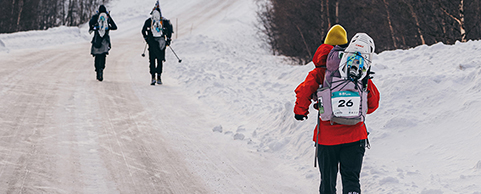Daywalking - Part 3: Where to go?

Bogong floor manager Lockie's daywalking photography.
Daywalking - where do I start?
is a series of four blogs written by Bogong staffer Nick Beer. Each blog intends to answer many of the common questions we hear from Bogong customers when they are first getting interested in bushwalking. Over the past few weeks, we have gone into the two most essential items to have a safe and enjoyable daywalking experience, FOOTWEAR and DAYPACKS.
Now equipped with the gear you need, this week Nick will be exploring WHERE TO GO?
Part 3 - Where to go?
If you just wanted to go walking you could have bought a treadmill, or done laps around the block, but you want to go somewhere breathtaking… Experience a sense of adventure! You’re itching to go out out on a daywalk but you don’t know where to go? You don’t want to drive too far, but you also don’t want to go somewhere boring. Below I will be go into the best ways to find amazing hikes, plus some of my own favourites.

Bogong staff member Shannon's hiking photography.
Guidebooks - Where to go?
Not all hikes are amazing. Investing in a couple of good bushwalking guidebooks is a great way of getting out to the best places with the limited time you have. Guidebooks will generally provide you with all the information you’ll need; how to get there, how long the walk is, how difficult the walk is and any other specific information you will need to plan your walk. Most guidebooks these days have glossy colour photos which will give you an idea of what to expect. While you are on the walk itself, a guidebook will generally provide a basic map and detailed notes on the walk, which help greatly with navigation. There is often sections which cover the human and natural history of the area, which greatly add to your enjoyment of the walk. The full range of Bogong hiking guidebooks can be found here.
Maps - Which way now?
In a similar vein to guidebooks, a good topographic map can greatly enrich your experience of the outdoors. Firstly, you are unlikely to get lost if you have a detailed map. But parallel to this is the wealth of information contained about the land forms you are walking through. For anyone interested in working their way up to doing longer multi-day walks, taking a map with you when you are just starting out is the best way to slowly learn the basics of map reading. The full range of hiking maps can be found here.
Compass - Be prepared!
Buying your first compass feels like a rite of passage. Over time you will slowly harness the magnetic properties of this mysterious device to navigate. Despite an ever-growing amount a electronic navigation devices, there is something very grounding about learning the art of navigation with a map and compass. Our full range of compasses can be found here.
GPS - Where am I?
Unlike a compass, a GPS will tell you where you are. However, not all GPS devices provide the same level of detail. A basic model will provide you with a grid location, which you can use in conjunction with a physical map to find your location. More advanced GPS devices will have mapping software and your location on the map will be updated as you move. Some models have integrated compasses and altimeters. The full range of GPS units can be found here.
GPS watches - Jack of all trades
A GPS watch is a stylish, modern addition to the very basic act of walking. Smart watches are quickly becoming a staple in people's day to day; GPS watches take this tech and craft it for your outdoor experiences. Would you like to know the time? What elevation you are at? What direction you should be heading? What the weather is going to do? How about your heartrate after a hectic hill? At their core, GPS watches provide navigation and communicate seamlessly with your mobile phone or computer. Track your walk, know where to go and download a summary of your activity, all from an attractive watch on your wrist. Additional features include tracking elevation gain, average speed, calories burnt, music control and more. The full range of GPS watches available at Bogong can be found here.
PLB’s - Save me!
PLB stands for Personal Locator Beacon. These are devices that help emergency services locate you in the event of a life-threatening event. For more information please refer to this excellent blog here.

Bogong owner Neil's photo in NZ.
Some favourite locations close to Melbourne
The area in and surrounding Melbourne is blessed with a diversity of landscapes. The following is a list of some unique and less frequented walks close to Melbourne. This is by no means a definitive list, but these are some the hidden gems close to Melbourne.
Best urban walk: Yarra Bend Park, Kew
Best beach walk: Edwards Point, St Leonards
Best waterfall walk: Wilhelmina Falls, Murrindindi
Best river walk: Cumberland River and Sheoak Creek, Lorne
Best mountain walk: Mt Erica and Mushroom Rocks, Mt Baw Baw
For those of you who live outside of Melbourne, Bogong Equipment stocks guidebooks covering all the best daywalk locations around Australia. The full range of hiking guidebooks can be found here.
Questions? Visit us, email us or call us (03 9600 0599).
More Articles
- Daywalking – Where do I start? Part 1: FOOTWEAR
- Daywalking - Part 2: DAYPACKS
- Bushwalking: How to pack efficiently
- MORE RESOURCES...


















